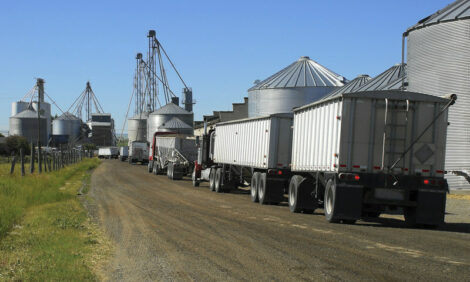



Poland Increases Governmental Stocks of Pork to Stabilize Market
POLAND - On February 1, 2007, the GOP began to procure 10,000 MT of pork at an estimated cost of 100 million PLN (US$ 33 million), in response to increasing farmer pressure for government intervention to stabilize farm-gate prices for hogs.Minister of Agriculture Lepper assured farmers that the GOP is prepared to procure up to 70,000-80,000 MT of pork and spend up to 500 million PLN (US$167 million) to resolve this issue. In an effort to get around the fact that the Common Agricultural Policy (CAP) of the EU does not permit government intervention in the pork market, Polish officials announced that the procurements will be used to increase the nations strategic food stocks.
The procurement of 10,000 MT was completed by February 14 and reportedly raised the price of live hogs by 10 percent, from 3.00 PLN to 3.30 PLN (US$ 1.00 to 1.10), well below the 3.80 PLN the Ministry of Agriculture expected. According to market experts, an estimated 30,000 MT of pork would need to be purchased to have an adequate impact on price. It is not clear when, or even if, the government will procure additional pork. No government officials would discuss this issue, claiming that it involved national security and due to concern about possible EU reaction. Nor is it clear if such procurements violate EU obligations, despite the government’s announcement.
It is expected that the situation in the pork market will start to improve during the second half of 2007, when farmers will reduce supplies due to low profitability of production. In addition, the Ukraine recently lifted its ban on Polish meat, which should help.
According to a large-scale hog producer, the hog market crisis mostly concerns small and medium size producers. Large scale farmers forward contract sales and therefore have mostly escaped the recent market turmoil. Farmers claim that domestic over supply aggravated by soaring feed costs caused by a drought last summer are the main reasons behind the hog market crisis. They also blame the dramatic increase since accession, of imports of piglets from other EU countries. In 2006, Poland imported an estimated 250,000 piglets for fattening from Germany, the Netherlands and Denmark, up from virtually zero in the years prior to accession.
(Comment: We believe high feed prices are mostly to blame for the hog market crisis. Domestic hog prices in January 2007 were only seven percent lower than the same period a year earlier.)
ThePigSite News Desk








